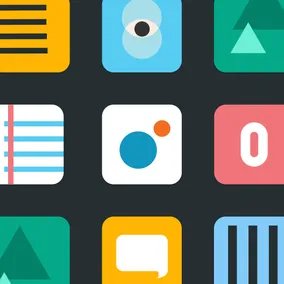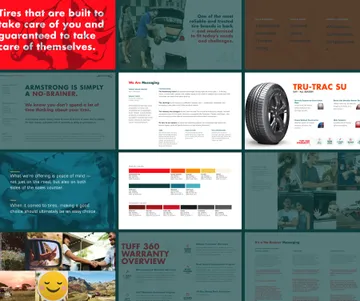A Viget Glossary: What We Mean and Why It Matters - Part 2

Melissa Southern, Former Senior Project Manager
Article Categories:
Posted on
Building a shared lexicon with clients is an important first step for any project. We’ve compiled a cross-discipline list of commonly-used, but often-misunderstood, terms used at Viget.
In my last post, I defined terms used by our UX team that are often confused or have multiple meanings across the industry. Today, I’ll share our definitions for processes and deliverables used by our design and strategy teams.
Creative
Brand Strategy
In our experience, we’ve found that the term brand strategy is used to cover a myriad of processes, documents, and deliverables. To us, a brand strategy defines how an organization communicates who they are, what they do and why in a clear and compelling way. Over the years, we’ve developed an approach to brand strategy work that emphasizes rigorous research, hands-on collaboration, and the definition of problems and goals. We work with clients to align on a brand strategy concept and, depending on the client and their goals, our final deliverables can range to include strategy definition, audience-specific messaging, identity details, brand elements, applications, and more. Take a look at the brand strategy work we’ve done for Fiscalnote, Swiftdine, and Armstrong Tire.

Content Strategy
A content strategy goes far beyond the words on a website or in an app. A strong content strategy dictates the substance, structure, and governance of the information an organization uses to communicate to its audience. It guides creating, organizing, and maintaining content so that companies can communicate who they are, what they do, and why efficiently and effectively. We’ve worked with organizations like the Washington Speakers Bureau, The Nature Conservancy, the NFL Players Association, and the Wildlife Conservation Society to refine and enhance their content strategies.
Still confused about the difference between brand and content strategy? Check out our flowchart.
Style Guide vs. Brand Guidelines
We often find the depth or fidelity of brand guidelines and style guides can vary greatly, and the terms can often be confused. When we create brand guidelines, they tend to be large documents that include in-depth recommendations about how a company should communicate their brand. Sections like “promise”, “vision”, “mission”, “values”, “tone”, etc. accompany details about how the brand’s logo, colors and fonts should be used in a variety of scenarios. Style guides, on the other hand, are typically pared down documents that contain specific guidance for organizations’ logos, colors and fonts, and don’t always include usage examples.
Design System
One question we get from clients often during a redesign or rebrand is, “How can I make sure people across my organization are adhering to our new designs?” This is where a design system comes into play. Design systems can range from the basic — e.g., a systematic approach to creating shared components for a single website — all the way to the complex —e.g., architecting a cross-product design system that can scale to accommodate hundreds of different products within a company. By assembling elements like color, typography, imagery, messaging, voice and tone, and interaction patterns in a central repository, organizations are able to scale products and marketing confidently and efficiently. When a design system is translated into code, we refer to that as a parts kit, which helps enforce consistency and improve workflow.
Comps or Mocks
When reviewing RFPs or going through the nitty-gritty of contracts with clients, we often see the terms mocks or comps used interchangeably to refer to the static design of pages or screens. Internally, we think of a mock-up as a static image file that illustrates proof-of-concept, just a step beyond a wireframe. A comp represents a design that is “high fidelity” and closer to what the final website will look like, though importantly, is not an exact replica. This is likely what clients will share with internal stakeholders to get approval on the website direction and what our front-end developers will use to begin building-out the site (in other words, converting the static design files into dynamic HTML, CSS, and JavaScript code).
If you're interested in joining our team of creative thinkers and visual storytellers who bring these concepts to life for our clients, we’re hiring in Washington, D.C. Durham, Boulder and Chattanooga. Tune in next week as we decipher the terms we use most often when talking about development.